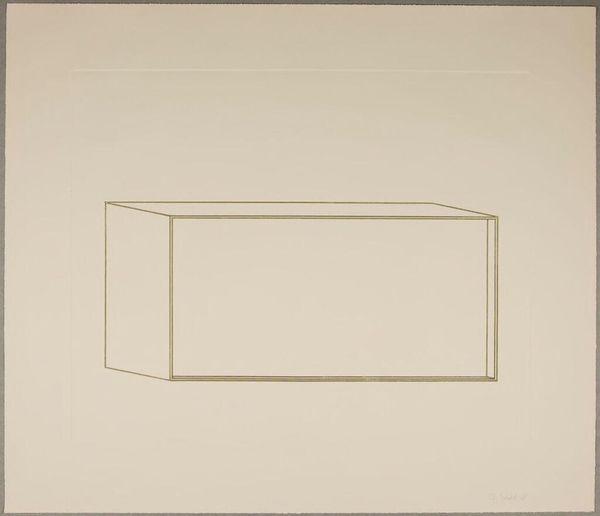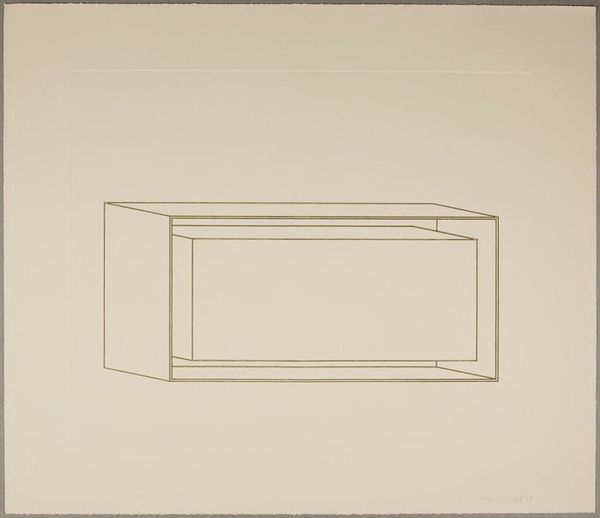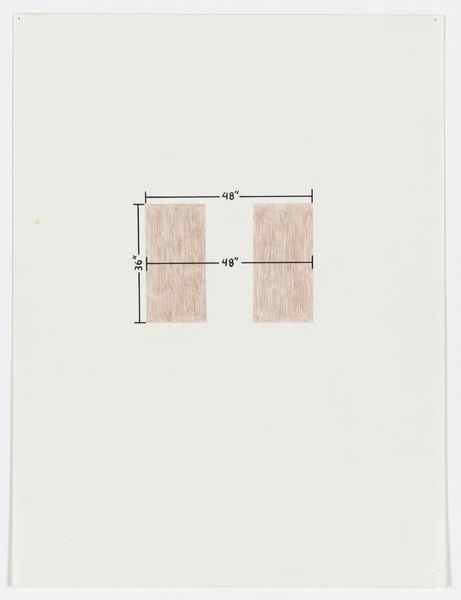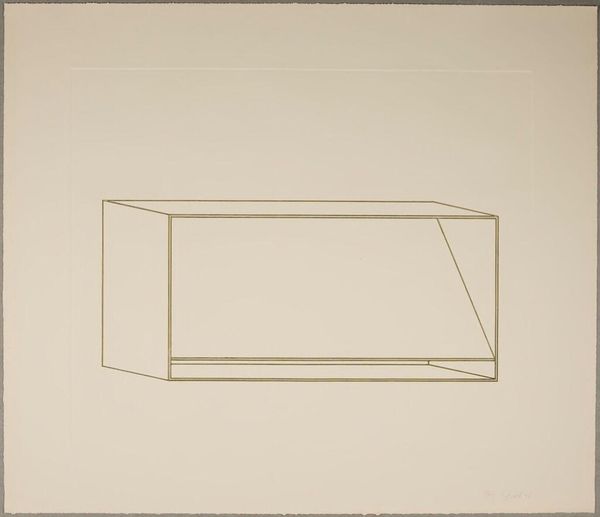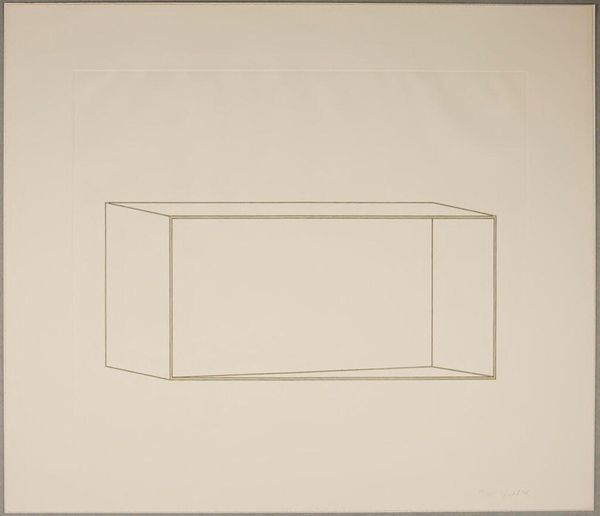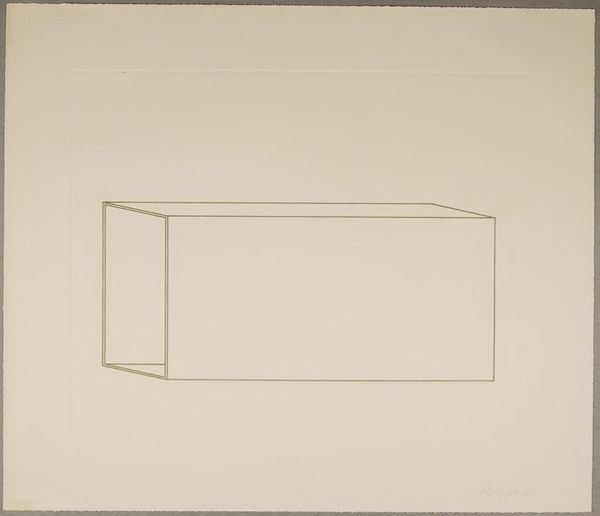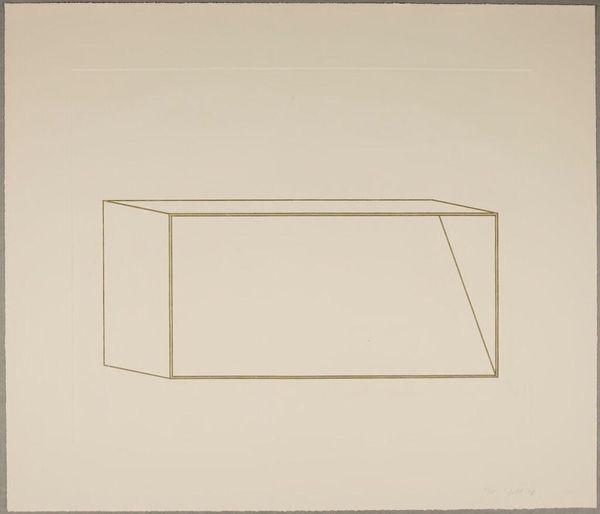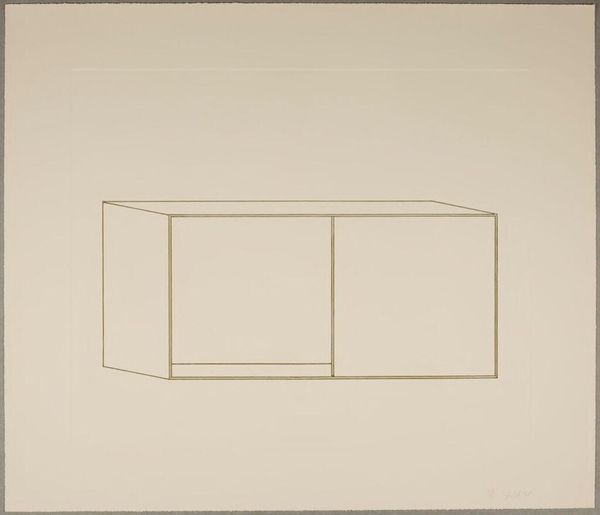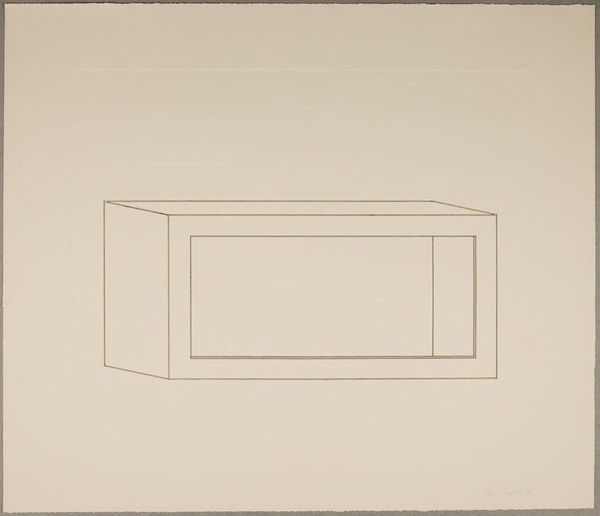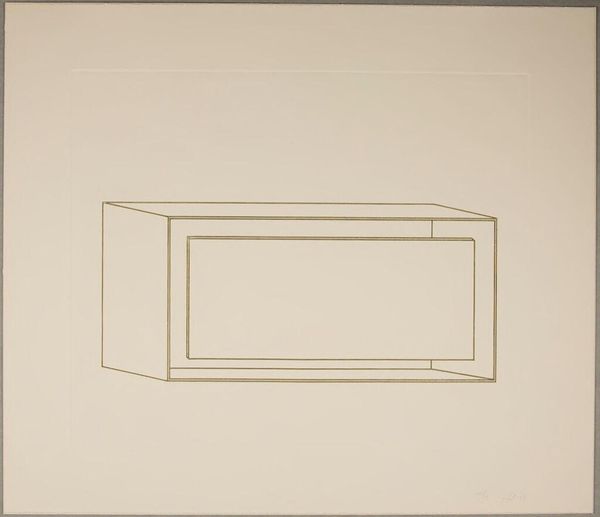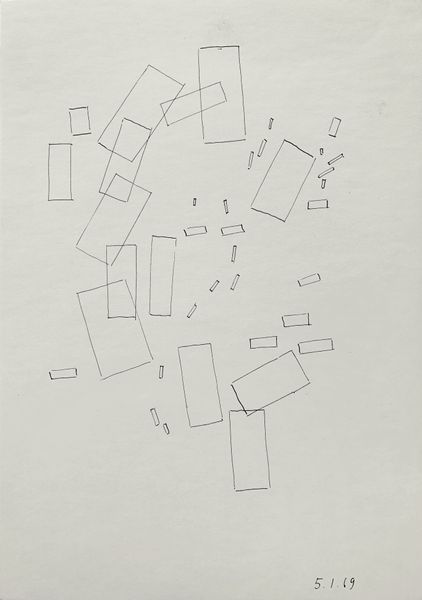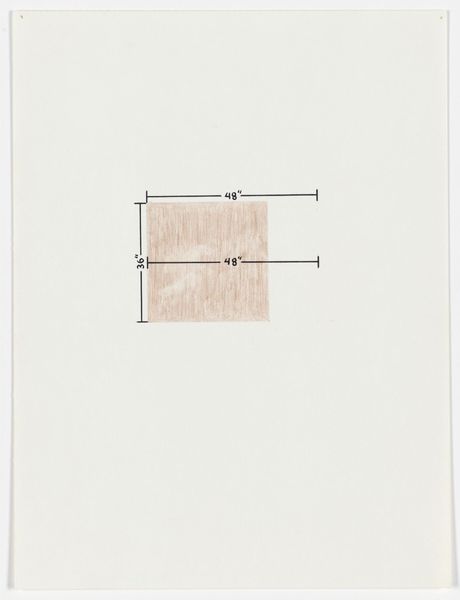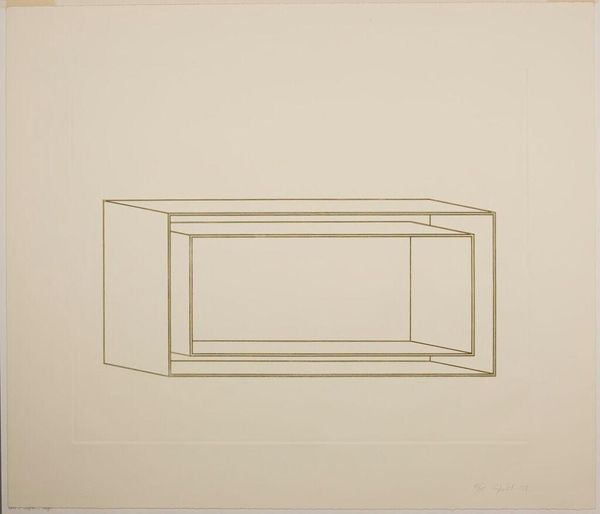
drawing
drawing
conceptual-art
minimalism
form
geometric
abstraction
line
Dimensions: sheet: 56.04 × 43.5 cm (22 1/16 × 17 1/8 in.)
Copyright: National Gallery of Art: CC0 1.0
Curator: Let’s examine this "Untitled" drawing by Donald Judd, created between 1966 and 1968. It's a piece characterized by minimalist principles, a concept so simple and repetitive that it evokes calm and starkness, which is quite central to Judd’s ethos. What's your initial response? Editor: It hits me as coldly efficient. The ordered stacks of boxes rendered as line drawings feel strangely lifeless. The mustard-yellow background clashes uncomfortably with their plain geometric lines. How does this drawing reflect its time period, from your perspective? Curator: Minimalism was a reaction against Abstract Expressionism. Artists sought objectivity and autonomy, which meant rejecting grand narratives and subjective emotions. This drawing reflects that ambition for autonomy, it’s just geometric form without the trappings of sentimentality or traditional aesthetics. Judd aimed to eliminate any representational or metaphorical meaning. The forms simply exist, which in itself, in his time, was revolutionary. Editor: That feels politically motivated in a way that the art-world often refuses to address head-on. By stripping art down, Judd inadvertently confronts issues surrounding labor, consumption, and value, particularly the reduction of human work to simplistic repetition mirroring industrialized society, wouldn’t you say? Also, can we really strip art away from all meaning and context? Curator: Well, I see Judd’s practice as aligning to institutions. Minimalism arose alongside increased commodification within the art market, as objects were reduced down to clean aesthetics suitable for both museum galleries and the collectors alike. By removing the artist's hand as a trace of expression, a framework emerges. Judd created structures that had an accessible logic that became quite influential. Editor: Influential, certainly. It influenced aesthetic and visual language—from advertising to industrial design. Though that visual language is itself complicit to forces within culture—he aimed for universality, yet this neutrality reads very much as male, white, and Western. Looking at Judd's use of line, the coldness almost has an oppressive feel. Is there any space within it for the viewer to truly interpret? Or are we just facing another symbol of societal constraint? Curator: I think, paradoxically, that this aesthetic opened the way for dialogue. His work can be regarded as a bold provocation which has in fact sparked discussion of values and underlying systems of display that often go unchallenged in artistic works. It requires we investigate its influences and aims. Editor: Perhaps the coldness of the drawing is its own invitation – one that insists we excavate the layered history of objects, asking precisely what has been smoothed over in the name of aesthetic purity.
Comments
No comments
Be the first to comment and join the conversation on the ultimate creative platform.
